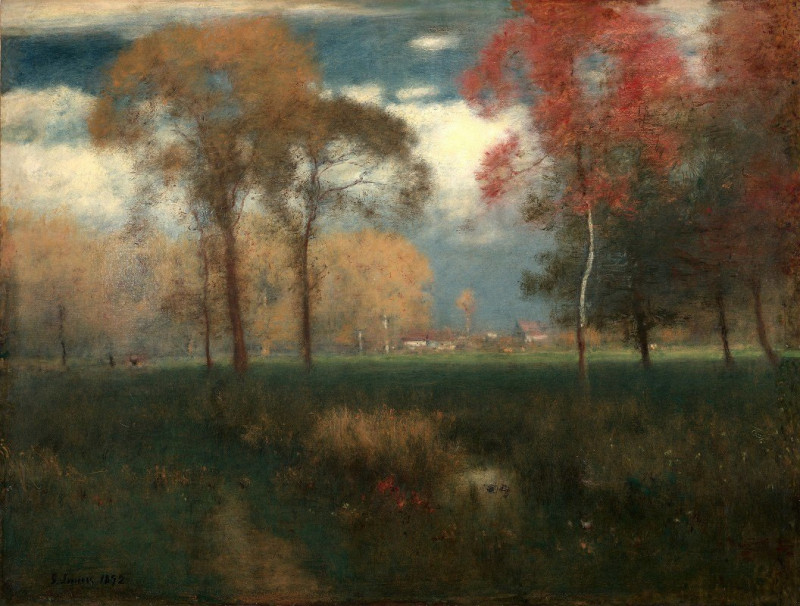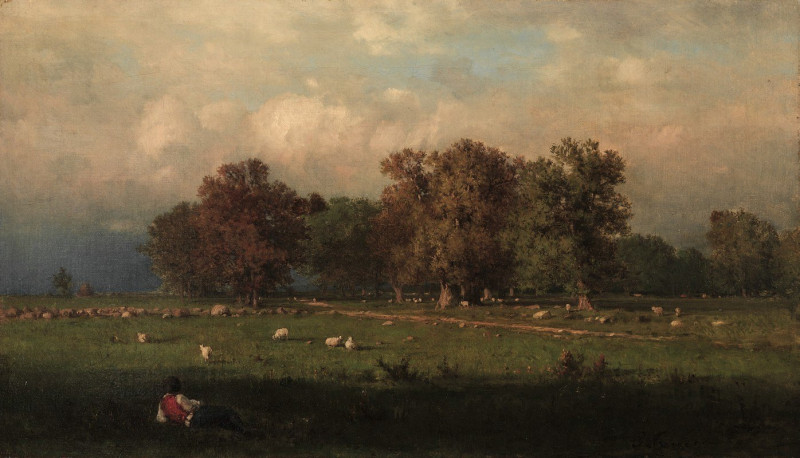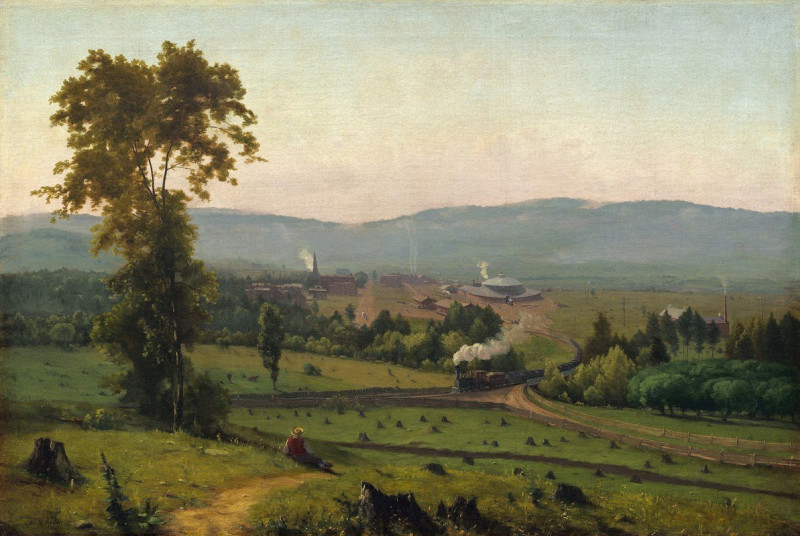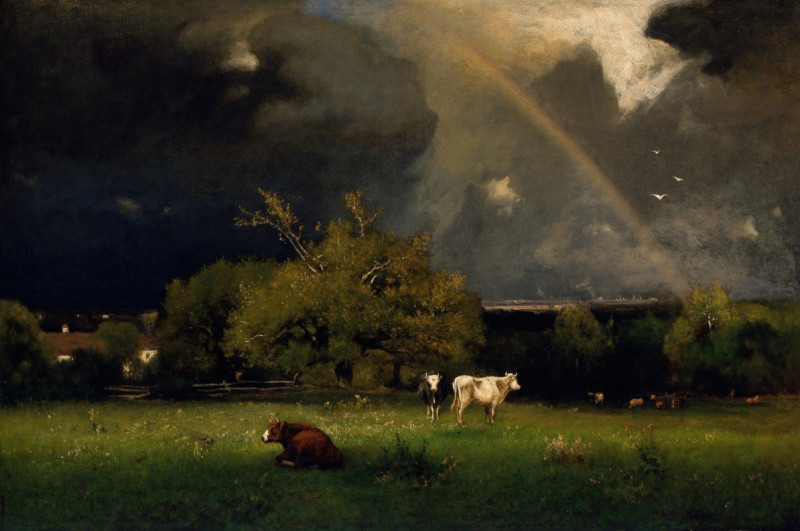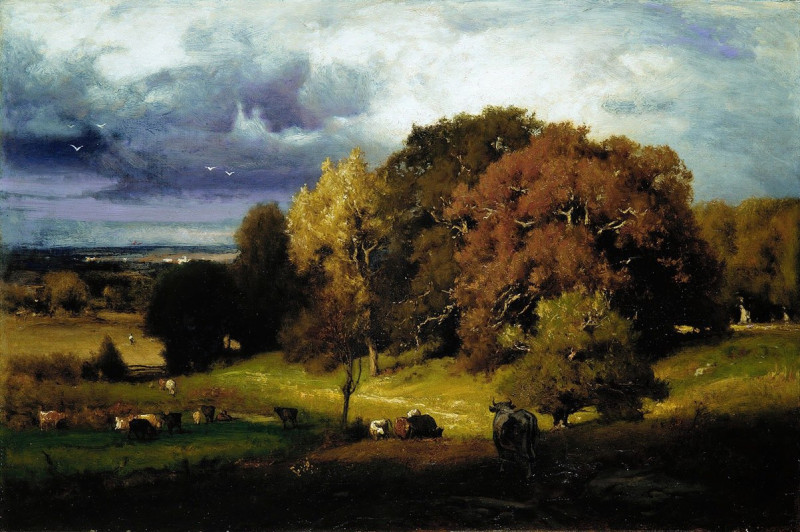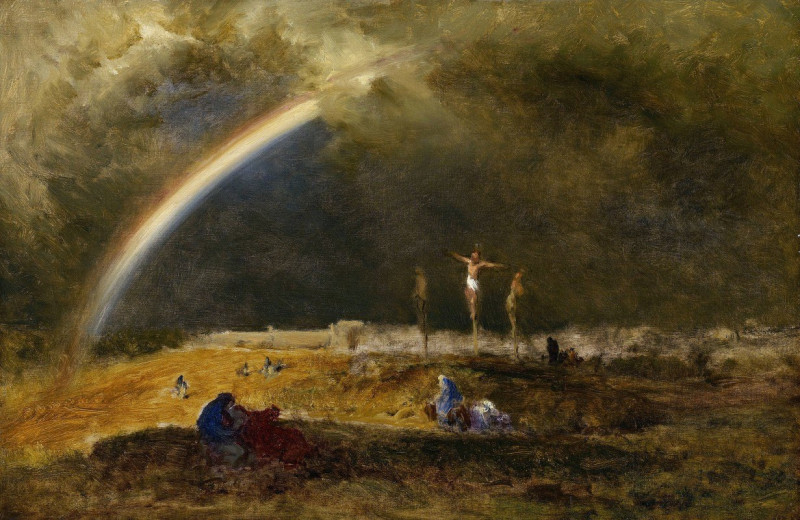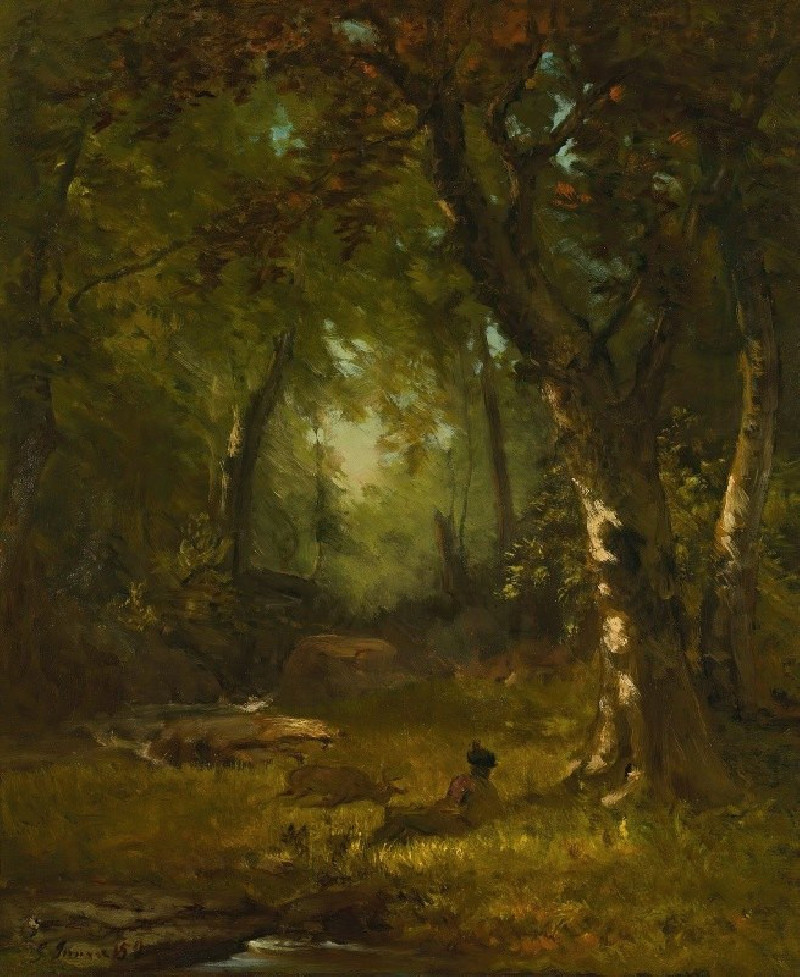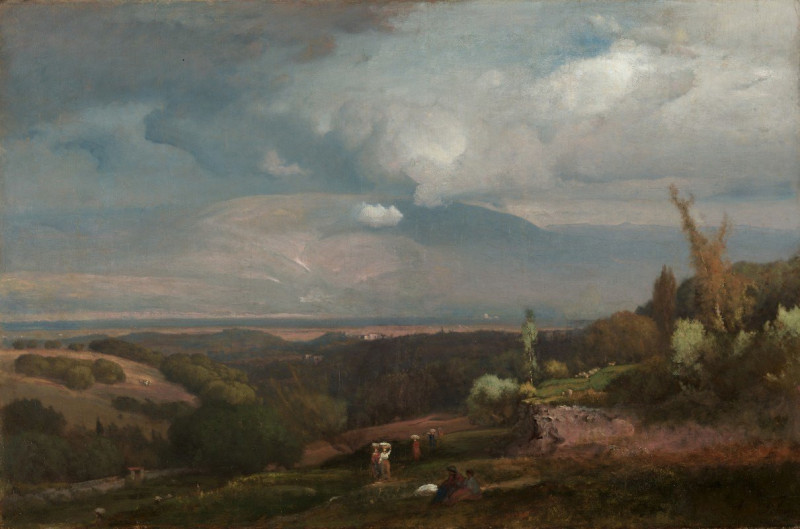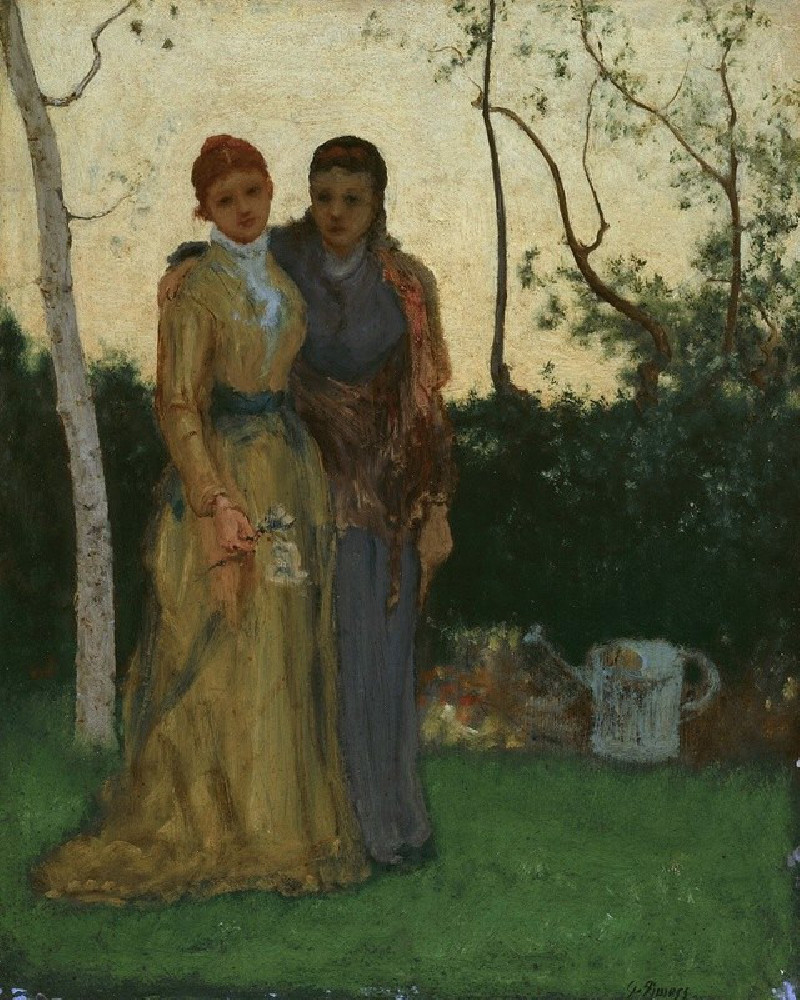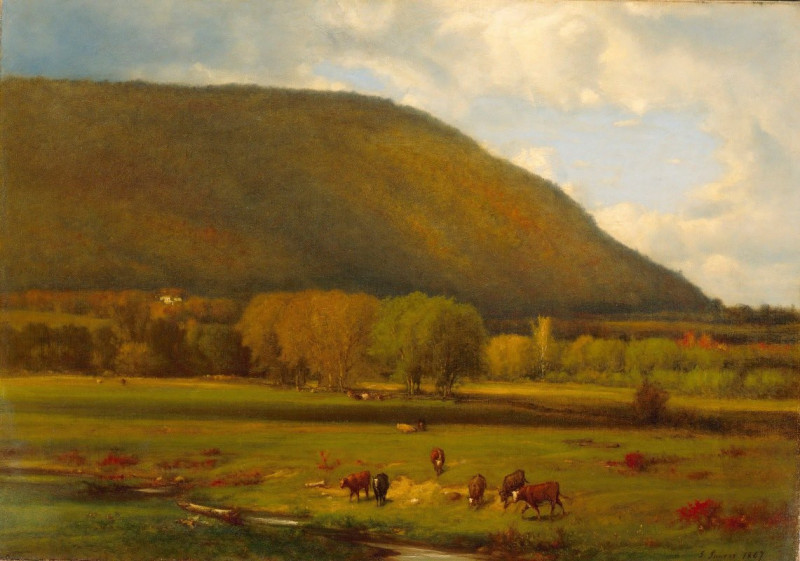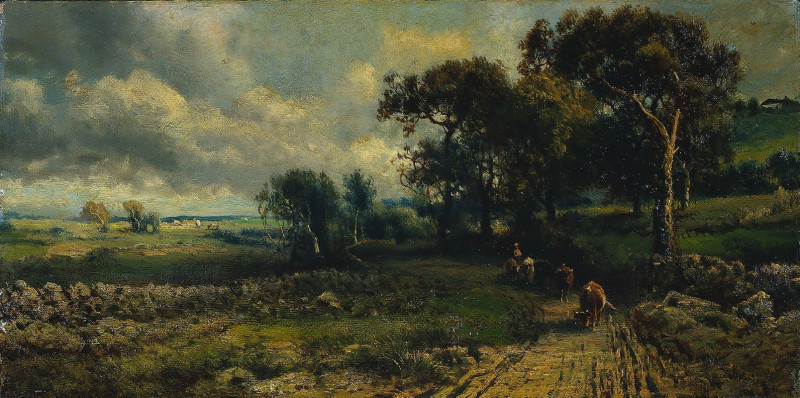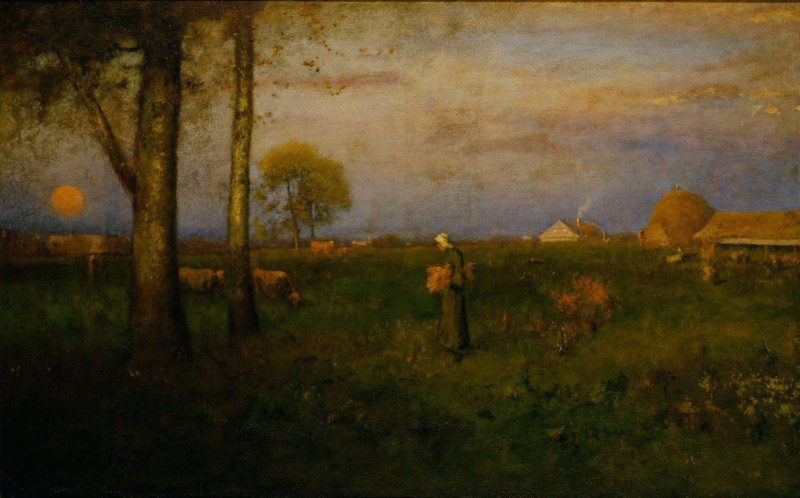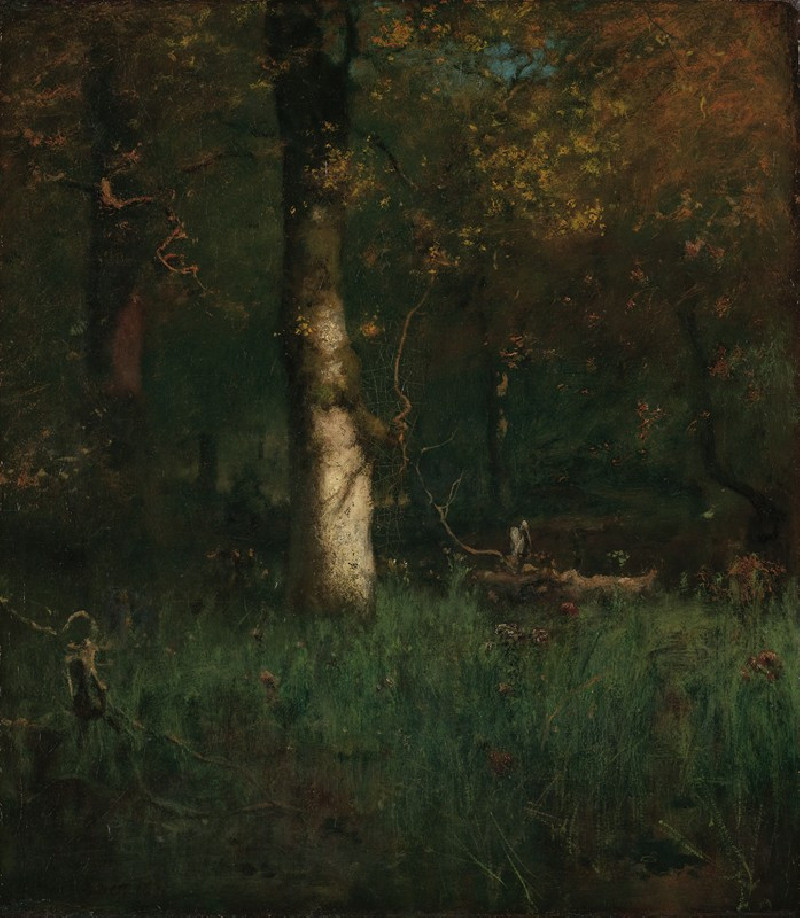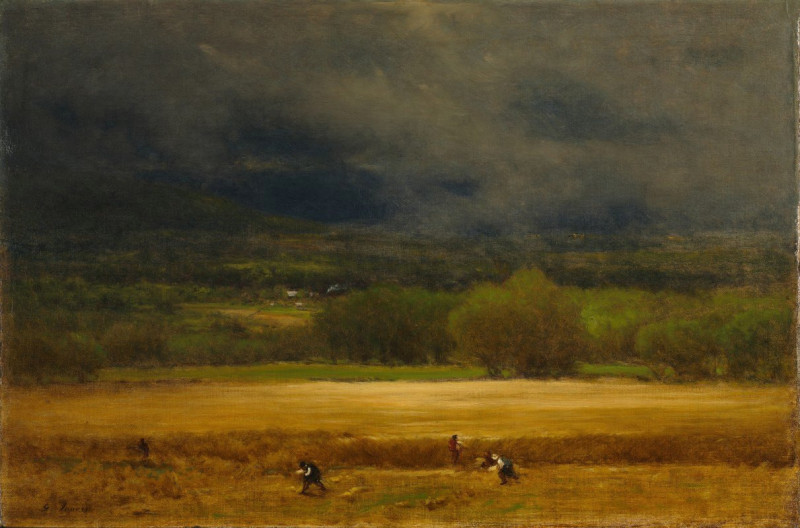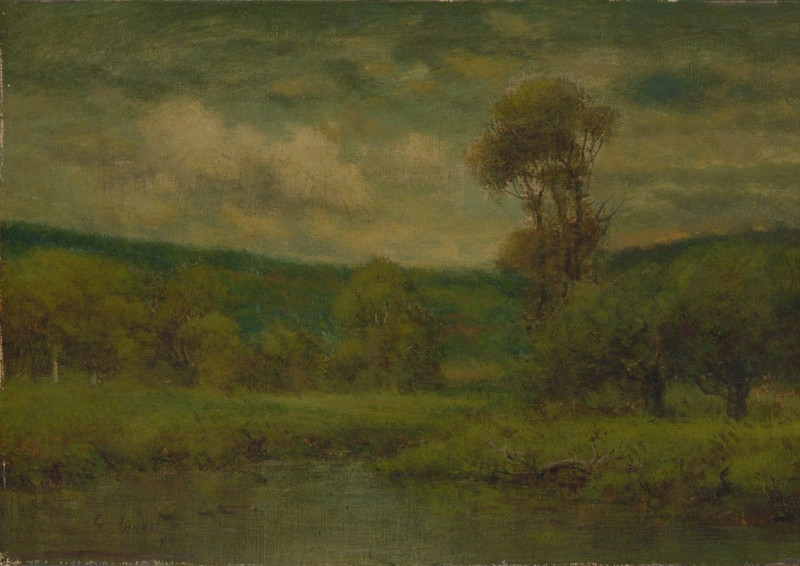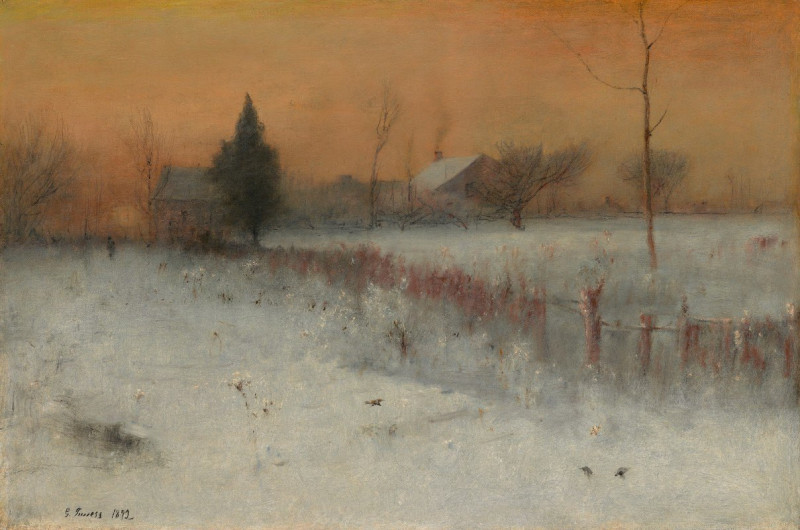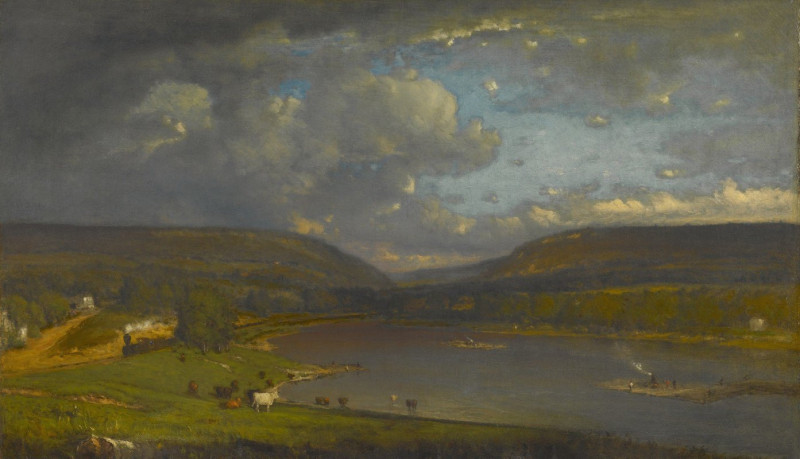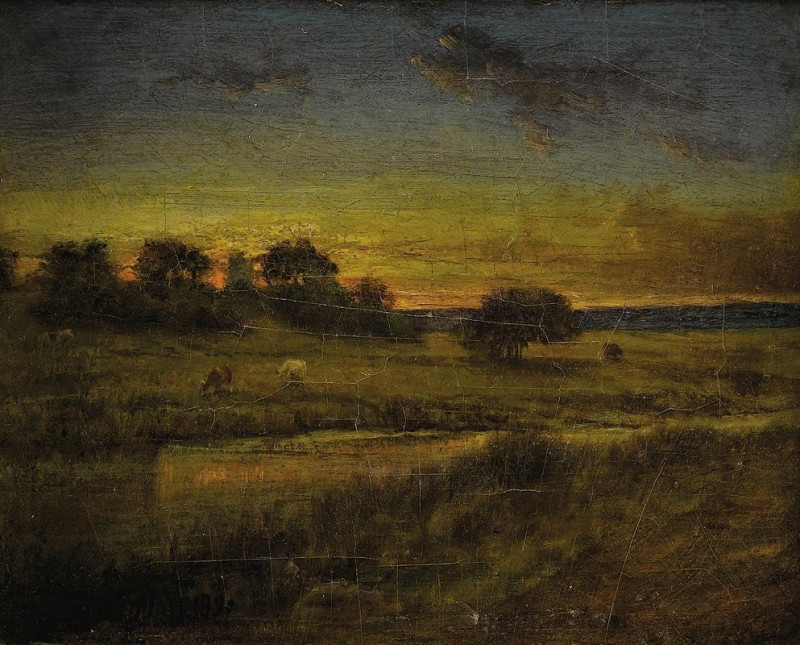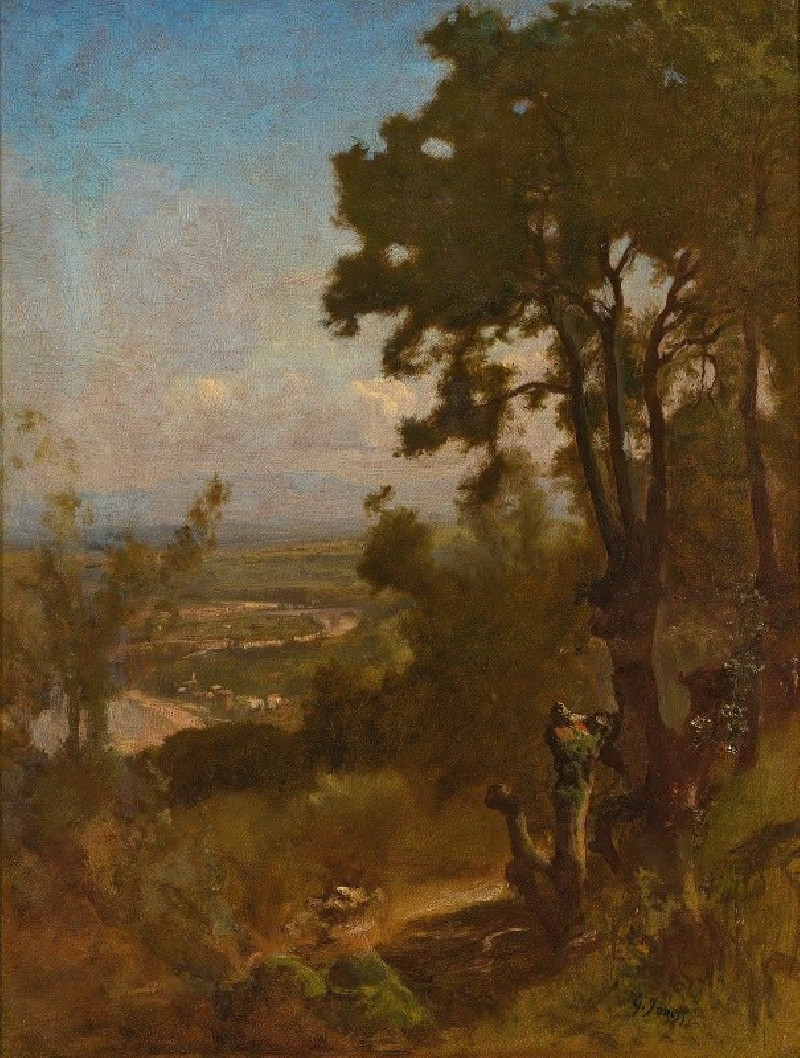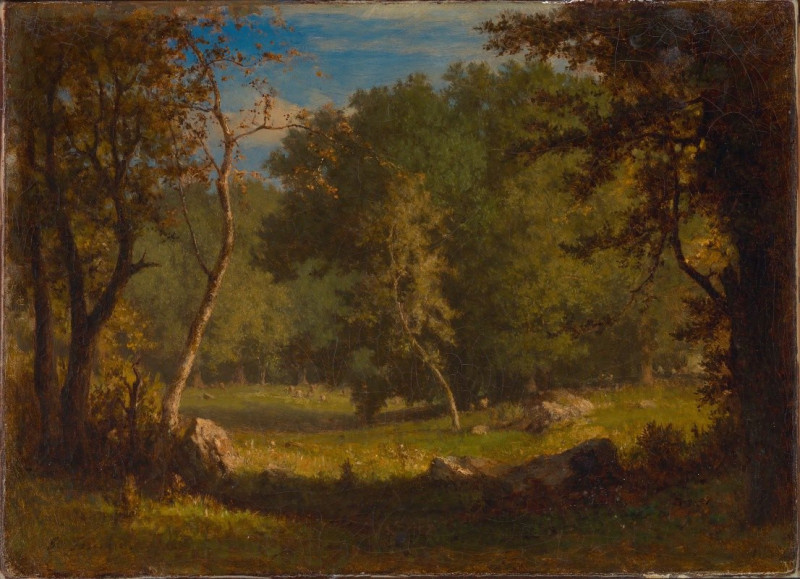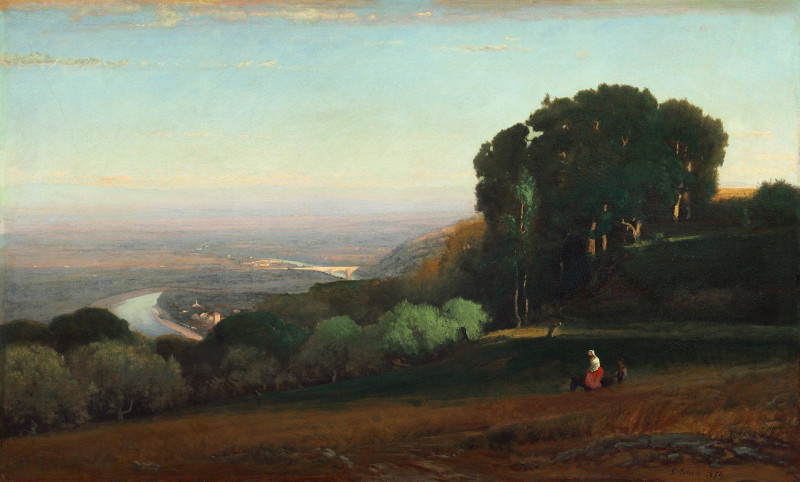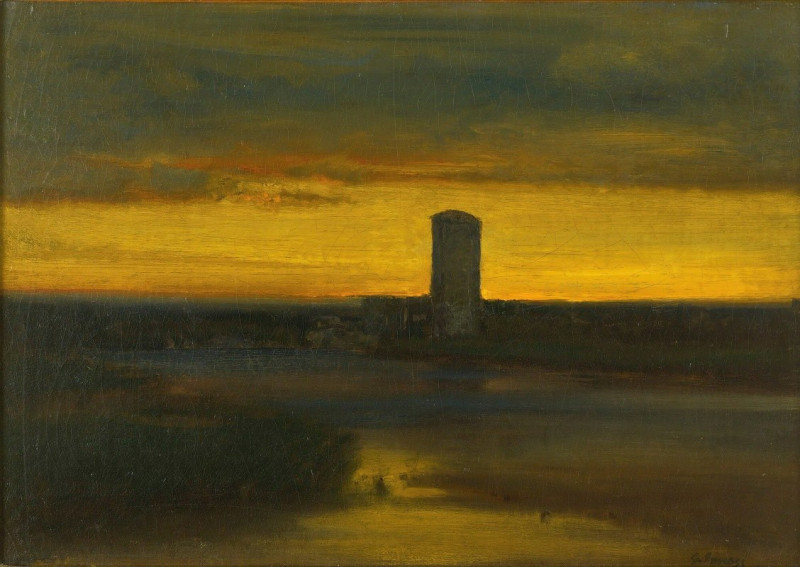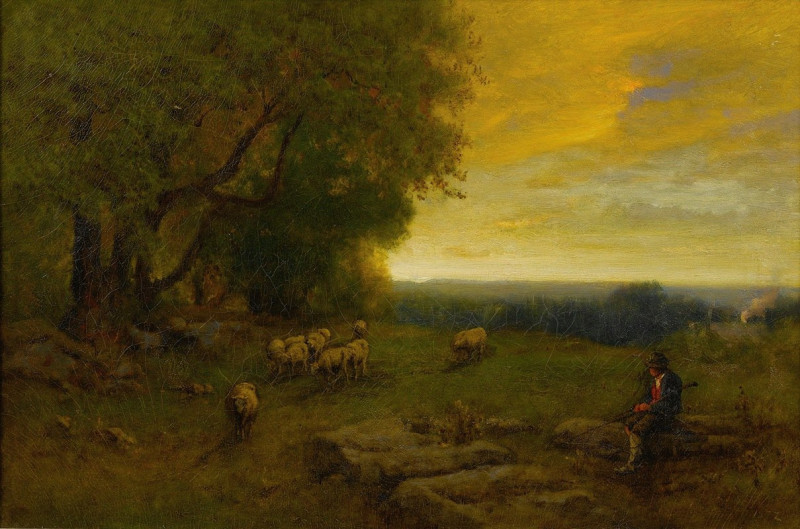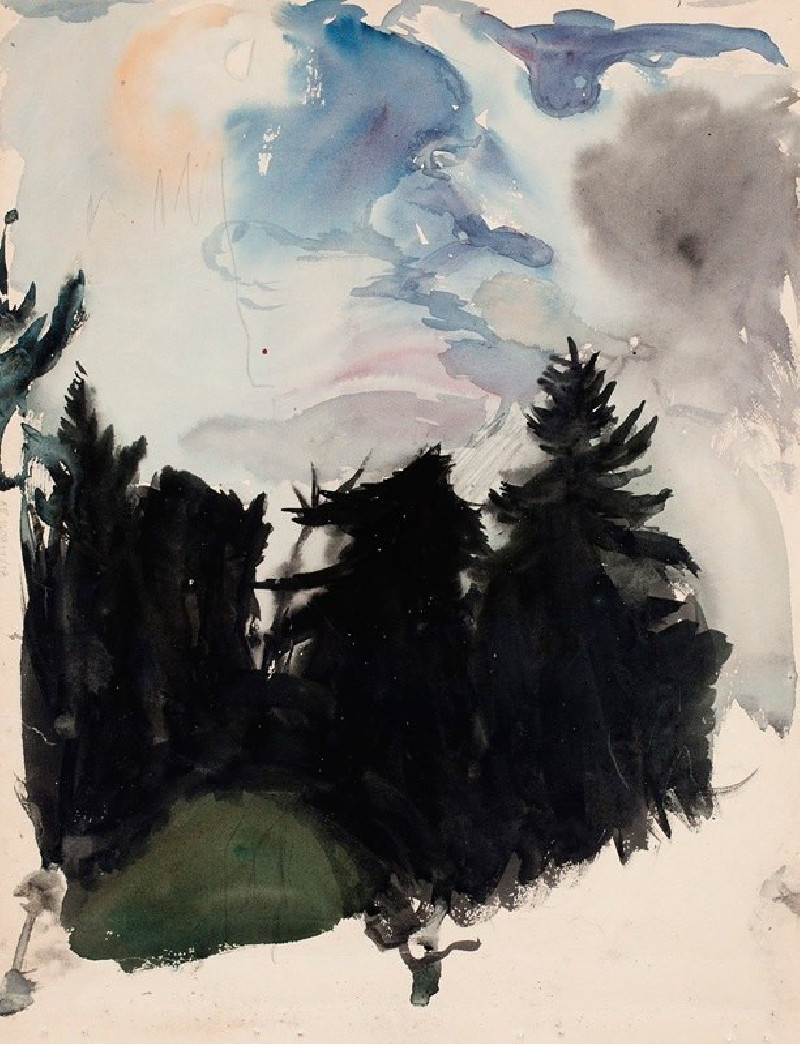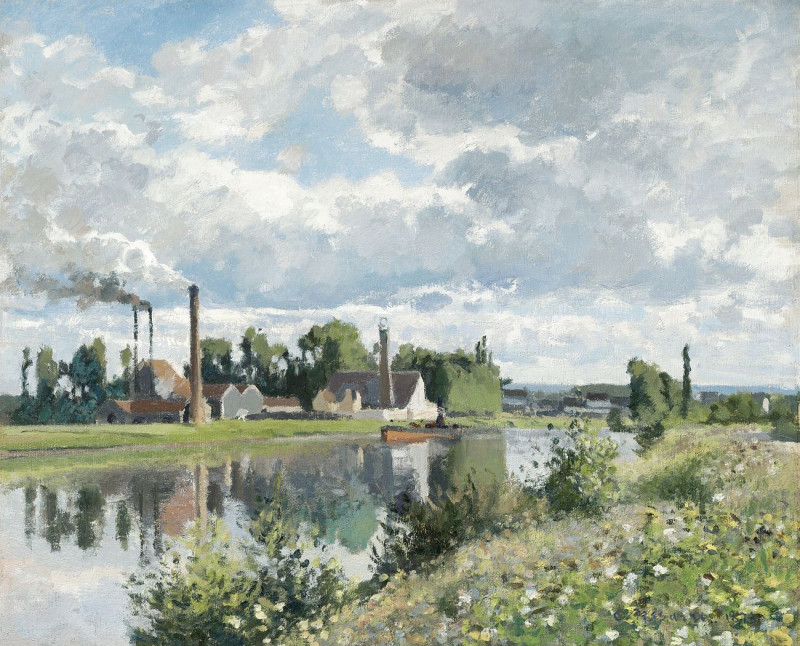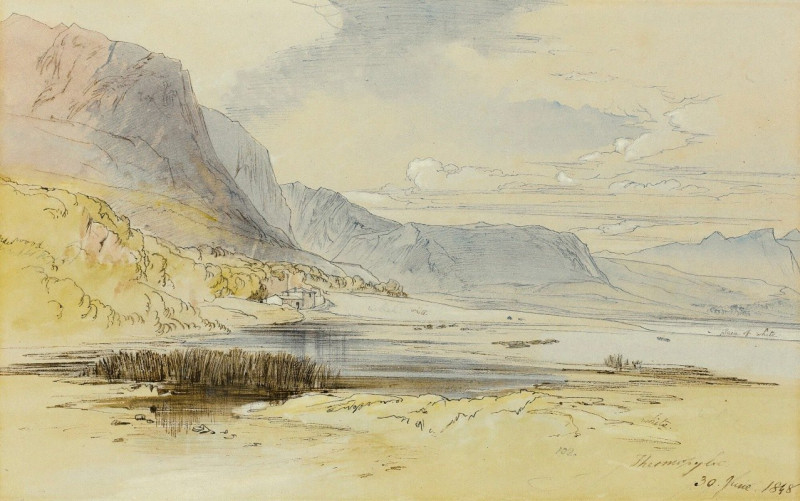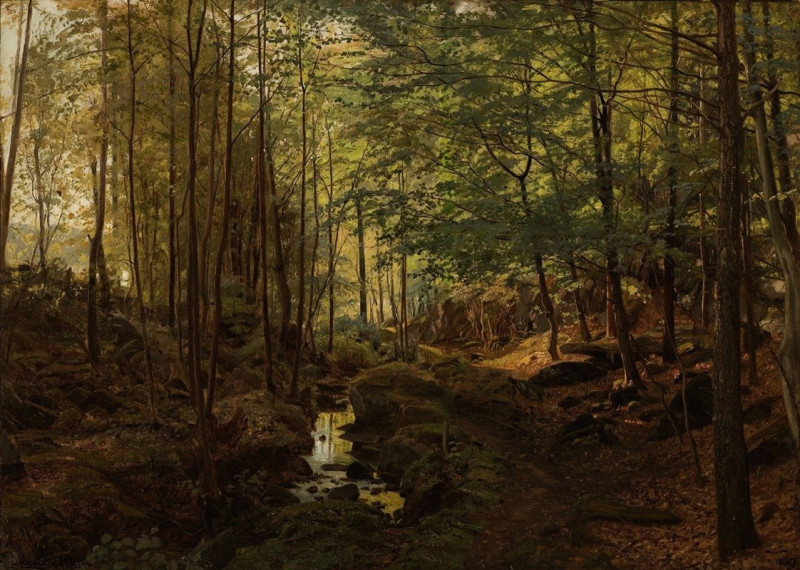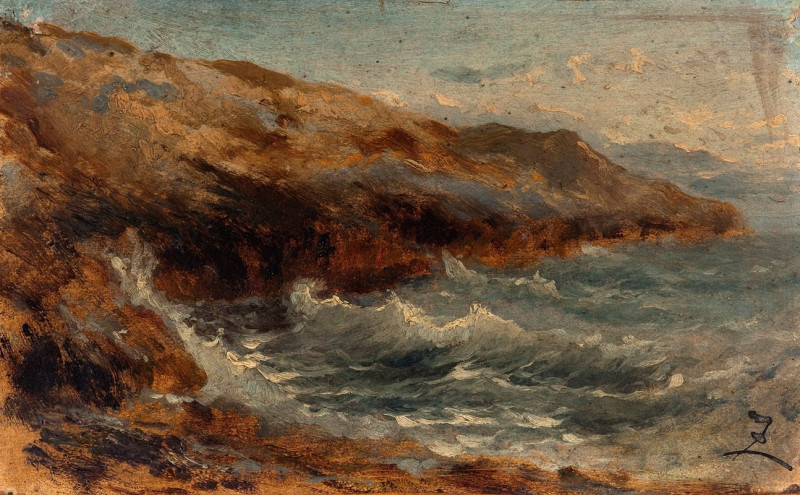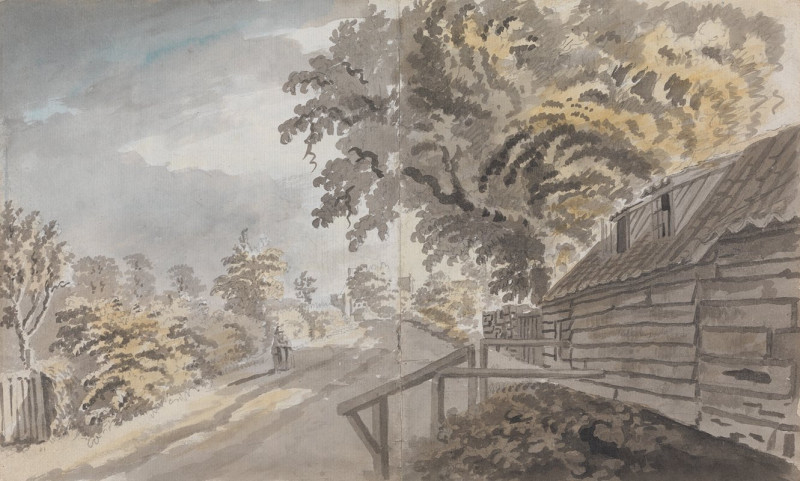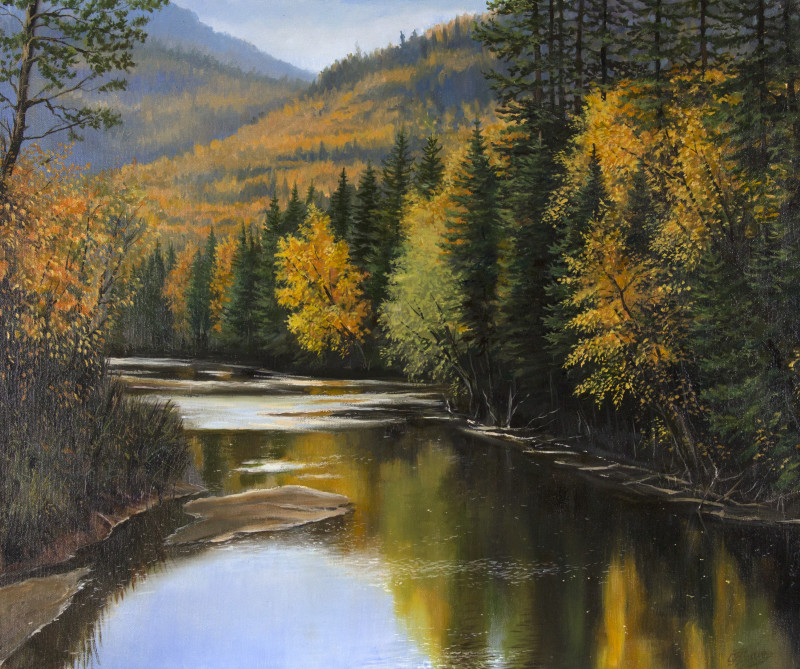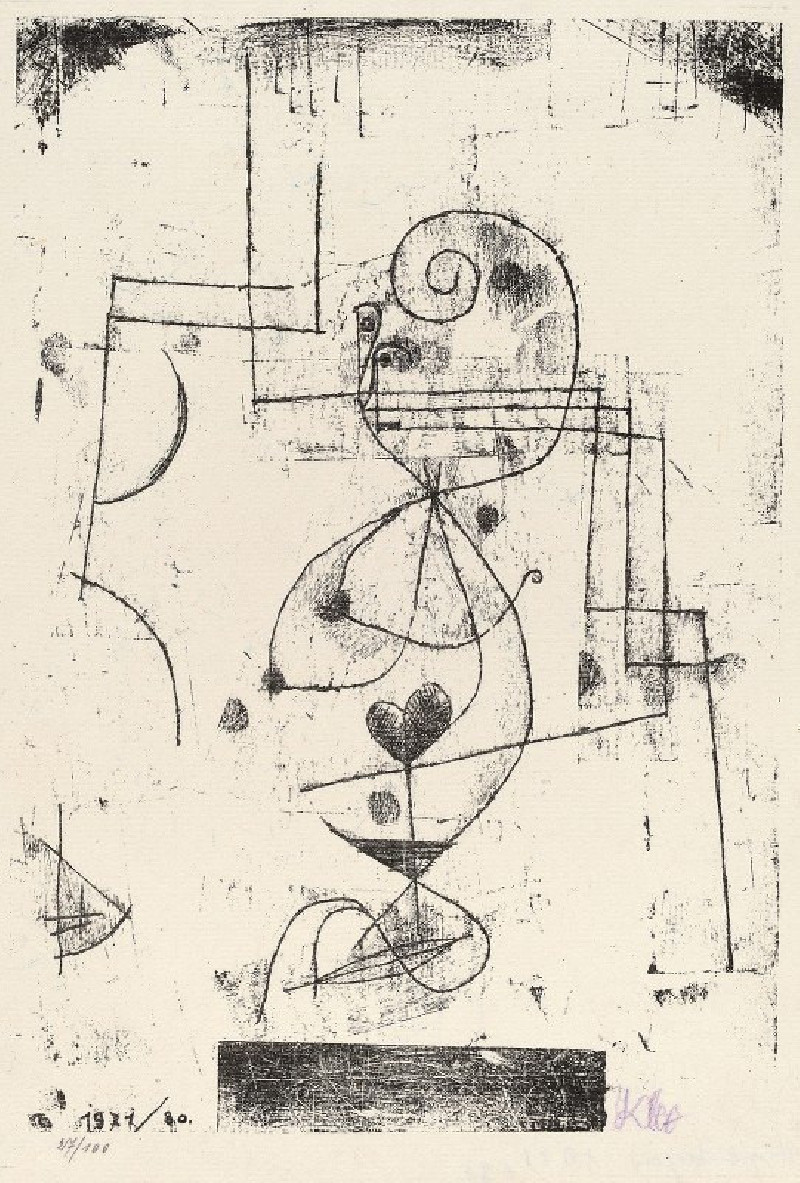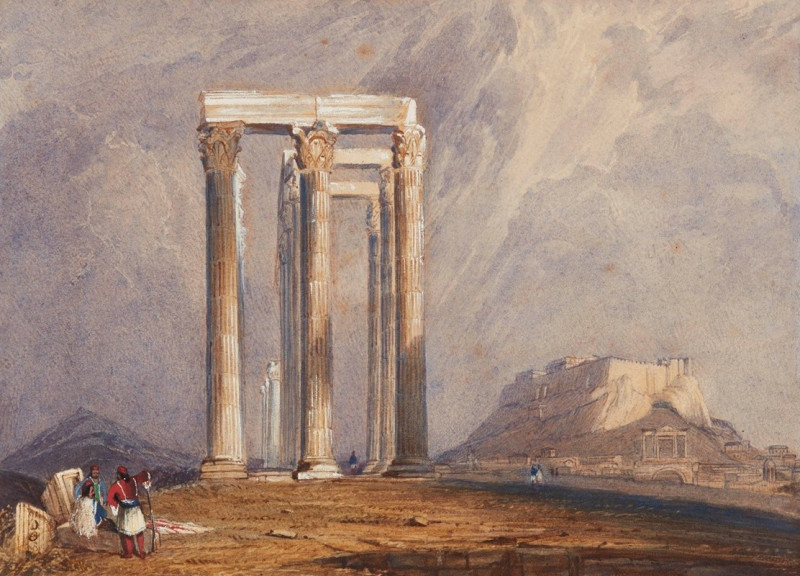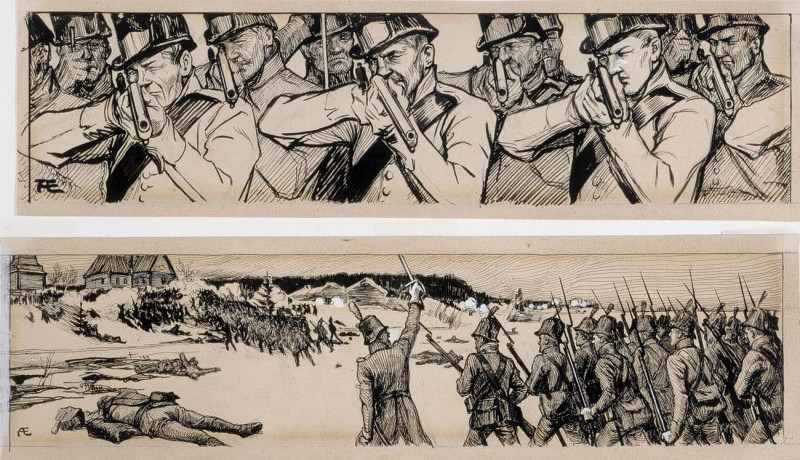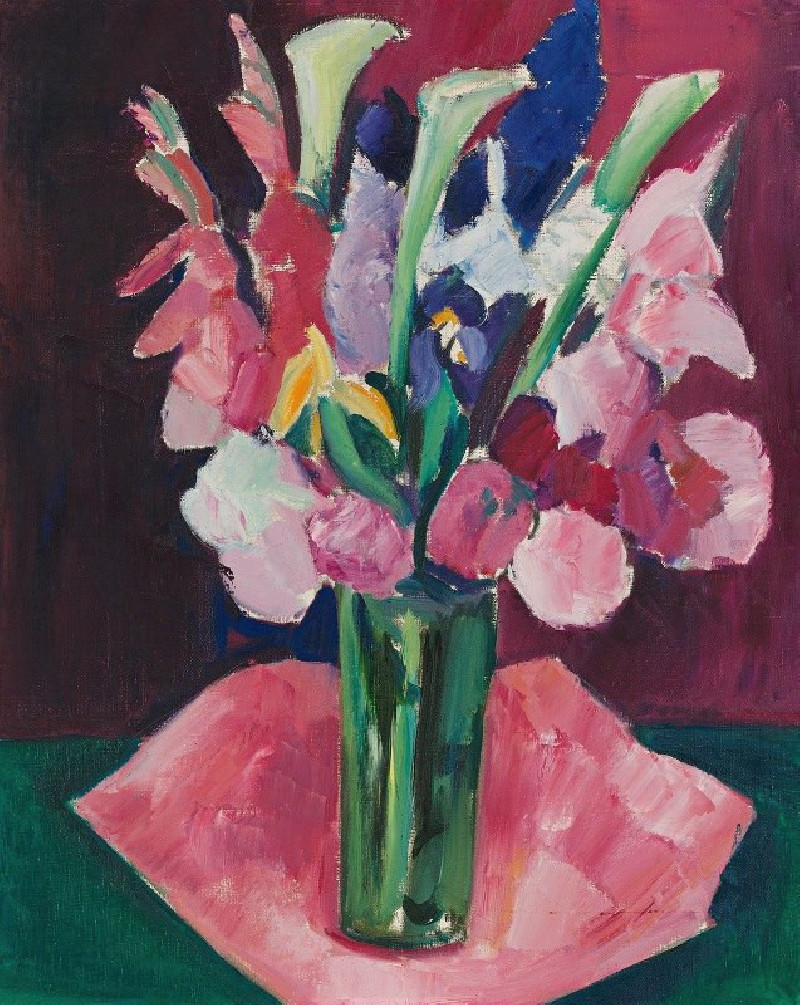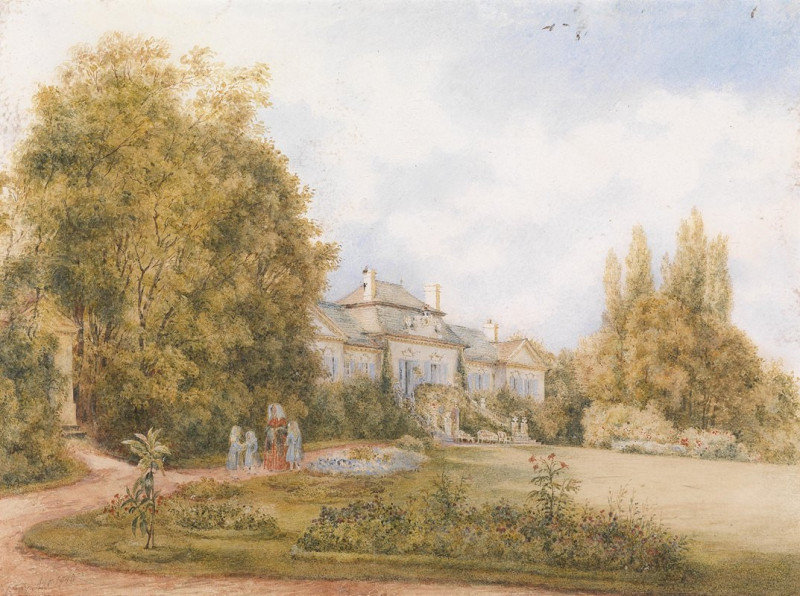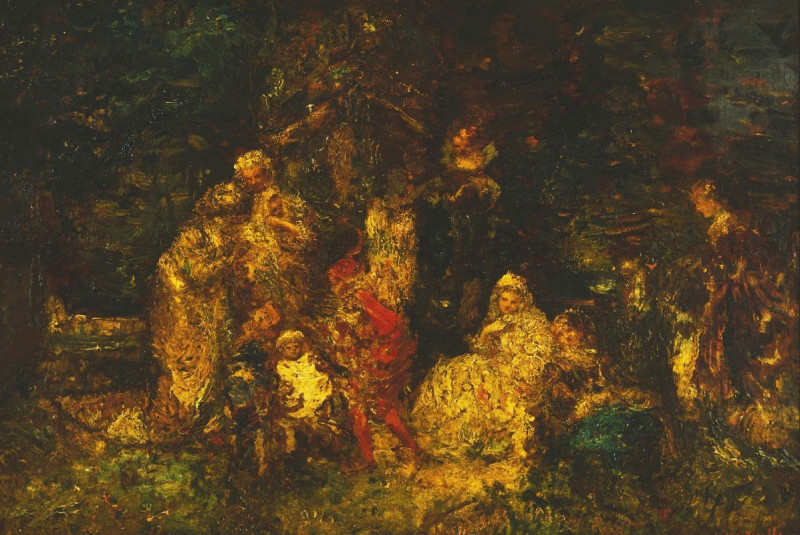Harvest Moon (1891)
Technique: Giclée quality print
Recommended by our customers
More about this artwork
Step into the tranquil world of George Inness’s "Harvest Moon," a masterpiece crafted in 1891 that encapsulates the essence of American landscape painting. This painting invites viewers into a serene, twilight-drenched field under the enchanting glow of a harvest moon.In the foreground, a sprawling meadow stretches out, peppered with the subtle details of wild grass and foliage that whisper of late summer or early autumn’s touch. Dominating the horizon is an enchanting moon, round and luminous, casting a gentle, silvery light across the landscape. It sets the scene alive with a mystic calmness that could almost be felt.Clusters of trees anchor the composition on either side, their forms blurred into soft silhouettes against the twilight sky. These towering guardians with their wispy, leaf-laden branches, add a sense of depth and enclosure to the scene, guiding the viewer’s eye towards the central horizon. To the left, hints of human presence—a figure and a small, smoke-wisping farmhouse—nestle subtly into the landscape, suggesting the harmony between human life and nature.Inness, known for his spiritual and philosophical approach to nature, uses a subdued palette of greens, blues, and earth tones that meld seamlessly within the idyllic scene. His brushwork, loose and expressive, combined with a skillful manipulation of light and shadow, evokes a sense of peace and timeless wonder."Harvest Moon" is not just a visual experience; it’s a meditative journey that exemplifies Inness’s talent for invoking emotion and contemplation through the canvas.
Delivery
Returns
George Inness (May 1, 1825 – August 3, 1894) was a prominent American landscape painter.
Now recognized as one of the most influential American artists of the nineteenth century, Inness was influenced by the Hudson River School at the start of his career. He also studied the Old Masters, and artists of the Barbizon school during later trips to Europe. There he was introduced to the theology of Emanuel Swedenborg, which was significant for him; he expressed that spiritualism in the works of his maturity (1879–1894).


